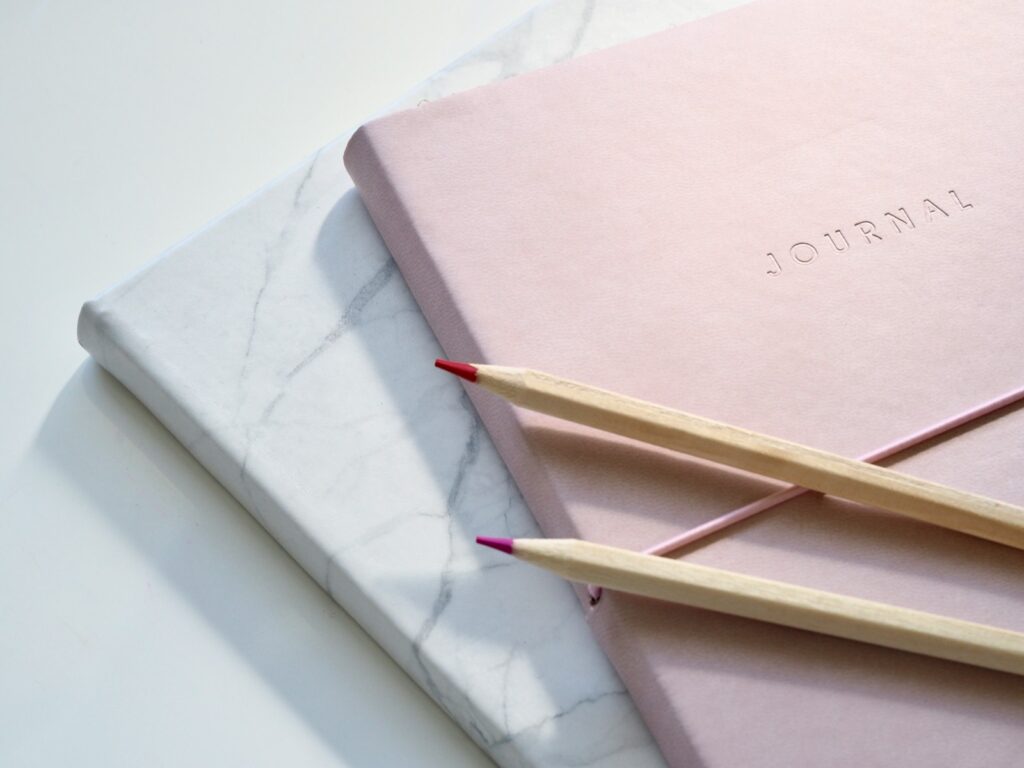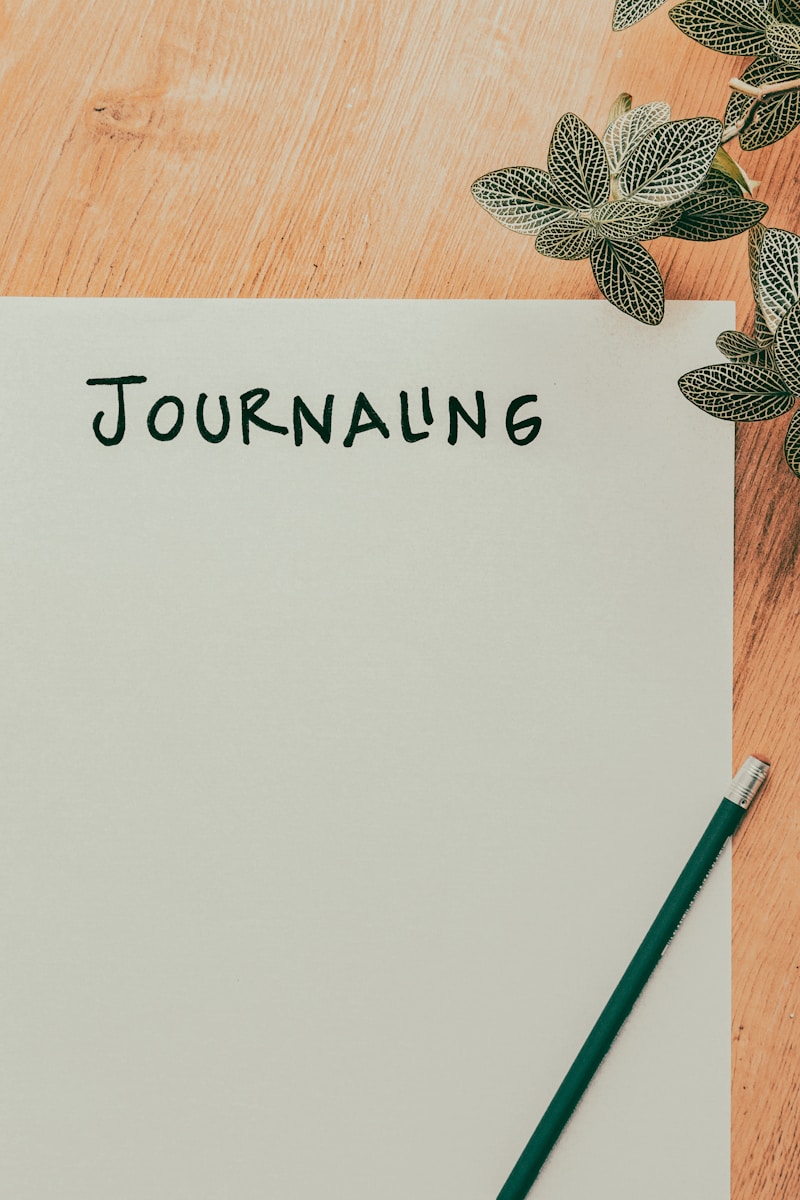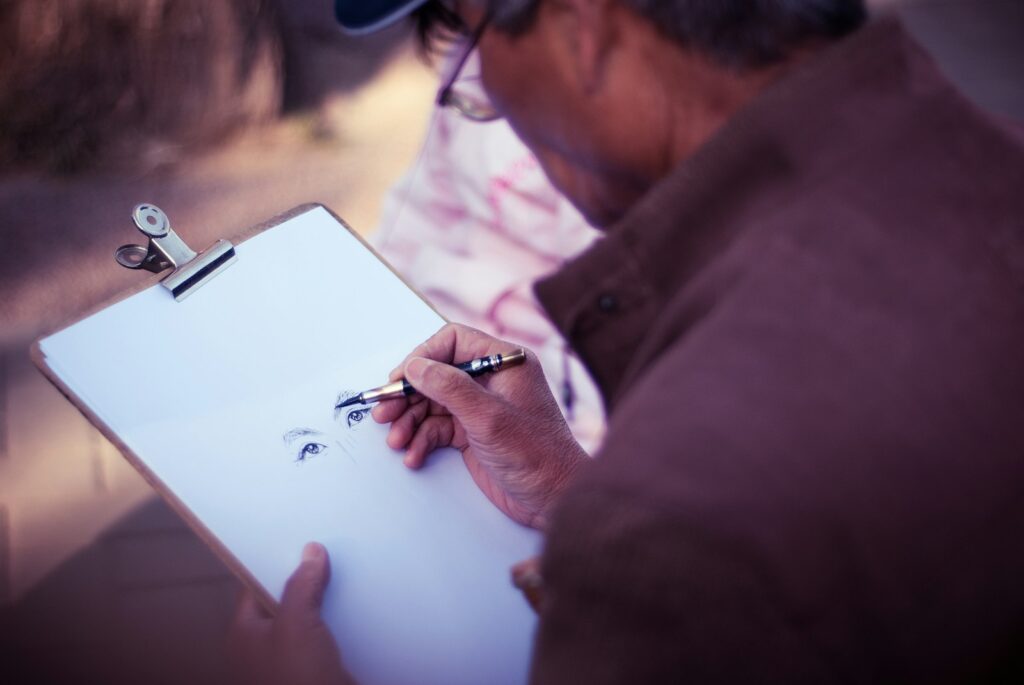Journaling is a simple yet powerful practice that has been embraced by writers, artists, and thinkers throughout history. From Anne Frank’s poignant diary to Marcus Aurelius’s timeless meditations, the act of putting pen to paper has long been a catalyst for self-discovery, emotional release, and personal growth. If you’re new to journaling and unsure where to begin, this comprehensive guide will walk you through the essentials, equipping you with the knowledge and tools to unlock the transformative power of this age-old tradition.
Why Journal? The Life-Changing Benefits
Before we dive into the nitty-gritty of how to start journaling, let’s explore the myriad benefits that make this practice so invaluable. Journaling is far more than a simple hobby – it’s a potent tool for personal development, emotional well-being, and cognitive enhancement.
Emotional Catharsis and Stress Relief: Journaling provides a safe, private outlet for processing and releasing pent-up emotions, anxieties, and stressors. By giving voice to your innermost thoughts and feelings on the page, you can achieve a sense of emotional catharsis and relief from the burdens weighing on your mind.
Increased Self-Awareness and Introspection: The act of regularly reflecting on your experiences, emotions, and thought patterns cultivates deeper self-awareness and introspection. As you document your life’s journey, you gain valuable insights into your values, strengths, weaknesses, and personal growth areas.
Improved Memory and Cognitive Function: Studies have shown that journaling can have a positive impact on memory and cognitive function. By regularly exercising your writing and organizational skills, you strengthen your ability to process information, recall details, and make meaningful connections.
Boosted Creativity and Problem-Solving Abilities: Journaling can be a powerful catalyst for creativity and problem-solving. As you freewrite and explore your thoughts on the page, you may uncover innovative solutions, gain fresh perspectives, and tap into your imaginative wellspring.
Goal-Setting and Accountability: Whether you’re pursuing personal, professional, or creative goals, journaling can be an invaluable tool for setting intentions, tracking progress, and holding yourself accountable. By documenting your journey, you can celebrate milestones, identify obstacles, and course-correct as needed.
Personal Growth and Self-Discovery: At its core, journaling is a journey of self-discovery. As you delve into your thoughts, emotions, and experiences, you gain a deeper understanding of who you are, what you value, and the person you aspire to become – paving the way for personal growth and transformation.
“The life of every man is a diary in which he means to write one story, and writes another; and his humblest hour is when he compares the volume as it is with what he vowed to make it.” – J.M. Barrie
Choosing Your Journal: Find the Perfect Fit
With the benefits of journaling firmly in mind, it’s time to select the physical (or digital) vessel that will house your thoughts and musings. There’s no one-size-fits-all approach when it comes to choosing a journal – it’s a highly personal decision based on your unique needs, preferences, and journaling goals.

Factors to Consider:
- Size: Journals come in a range of sizes, from pocket-sized notebooks to large, sprawling tomes. Consider your intended use – will you be carrying your journal with you on the go, or will it primarily reside on your desk or nightstand?
- Binding: The binding style can greatly impact the journaling experience. Spiral-bound journals lay flat for easy writing, while hardcover journals offer a sense of permanence and durability.
- Paper Quality: The paper quality of your journal can make a significant difference, especially if you plan to incorporate illustrations, calligraphy, or other artistic elements. High-quality paper tends to be thicker and more resistant to bleed-through.
Lined, Unlined, or Dot Grid?
The interior layout of your journal is another crucial consideration:
- Lined: Lined journals provide a structured writing surface, making them ideal for those who prioritize neat handwriting and organization.
- Unlined: Unlined or blank journals offer a blank canvas, allowing for maximum creative freedom and the ability to sketch, doodle, or incorporate mixed media elements.
- Dot Grid: Dot grid journals strike a balance between structure and flexibility, with subtle dotted lines that guide your writing while leaving room for artistic expression.
Journaling Apps vs. Traditional Notebooks
In the digital age, journaling apps have emerged as a convenient alternative to traditional notebooks. Apps like Day One, Journey, and Penzu offer features like password protection, cloud backup, multimedia integration, and even AI-powered writing prompts. However, many journalers still prefer the tactile experience and permanence of a physical notebook.
Matching Journal Style to Your Needs
When selecting your journal, consider your specific journaling goals and intentions:
- Travel Journals: If you plan to document your adventures on the road, a compact, lightweight journal with durable binding is ideal.
- Productivity Journals: For those using journaling as a tool for goal-setting, task management, and productivity, a structured bullet journal or planner-style notebook may be the perfect fit.
- Creative Journals: If you envision incorporating art, collages, or mixed media elements into your journaling practice, an unlined or multimedia journal with high-quality paper is essential.
Lastly, don’t underestimate the power of a recycled or upcycled journal. Repurposing an old book, notebook, or even a simple composition book can imbue your journaling practice with a sense of sustainability and personal meaning.
Laying the Foundation: Setting Intentions and Routines
With your journal selected, it’s time to lay the foundation for a consistent and rewarding journaling practice. This begins with reflecting on your “why” – your motivations, goals, and intentions for journaling.

Reflecting on Your “Why”
Take a moment to contemplate what you hope to gain from journaling. Are you seeking emotional release and catharsis? Do you want to cultivate greater self-awareness and introspection? Or perhaps you’re looking for a tool to boost your creativity, productivity, or problem-solving abilities. Clarifying your “why” will help you tailor your journaling practice to your specific needs and aspirations.
Deciding on Structure: Freewriting, Prompts, Lists, etc.
Journaling can take many forms, and there’s no single “right” way to approach it. Some prefer the freedom of freewriting – allowing their thoughts and emotions to flow unencumbered onto the page. Others find structure and guidance more conducive to their journaling practice, utilizing prompts, lists, or themed entries.
Here are a few common journaling structures to explore:
- Freewriting: This unstructured approach involves setting a timer and writing continuously without stopping, letting your thoughts and emotions pour onto the page without judgement or editing.
- Guided Prompts: Using writing prompts or questions as a starting point can provide direction and inspiration, especially on days when you’re feeling stuck or uninspired.
- Lists: Creating lists – whether it’s gratitude lists, daily accomplishments, or goals – can be a simple yet effective way to capture your thoughts and cultivate a positive mindset.
- Themed Entries: Some journalers find it helpful to structure their entries around specific themes, such as daily reflections, dream journaling, or chronicling specific events or experiences.
Remember, there’s no single “correct” way to journal – the key is to experiment and find the approach (or combination of approaches) that resonates most with you.
Finding the Ideal Time and Environment
Consistency is crucial when it comes to establishing a rewarding journaling practice. To cultivate consistency, identify the time of day and environment that works best for you. Some prefer the quiet stillness of the early morning hours, while others find solace in journaling before bed as a way to process the day’s events.
Consider factors like your energy levels, daily routines, and personal preferences. Do you thrive in complete silence, or do you prefer the ambient noise of a coffee shop or park? By aligning your journaling practice with your natural rhythms and preferences, you’ll be more likely to stick with it over the long haul.
Overcoming Writer’s Block and Consistency Challenges
Even the most dedicated journalers can experience periods of writer’s block or struggle with maintaining consistency. When you find yourself in a rut, try these strategies:
- Change your environment: Sometimes, a simple change of scenery can reignite your inspiration and creativity.
- Freewrite without restraint: If you’re feeling stuck, set a timer and write without censoring yourself. Often, the act of putting pen to paper can unleash a torrent of thoughts and emotions.
- Incorporate prompts or writing exercises: Seeking
Here is the continuation of the comprehensive blog post on how to start journaling for beginners:
Making Journaling a Self-Care Ritual
While journaling can be a powerful tool for self-discovery and personal growth, it’s important to approach it with the same care and reverence you would any self-care practice. By intentionally creating a sacred space and ritual around your journaling sessions, you can enhance the therapeutic benefits and deepen your connection to the process.

Consider setting aside a dedicated journaling nook – a cozy corner, a favorite chair, or even a special spot outdoors that allows you to feel present and grounded. You might light a candle, burn some incense, or play soothing music to cultivate a calming atmosphere.
As you settle into your journaling ritual, begin with a few deep breaths to center yourself and leave the external world behind. You may even incorporate a brief meditation or recite a personal mantra to clear your mind and open yourself to the flow of thoughts and emotions.
Remember, there’s no need to judge or censor your journaling words – this is a sacred space for radical honesty and self-expression. Let your innermost musings, worries, and dreams spill freely onto the page without restraint or fear of consequences.
Over time, your journaling practice can become a cherished ritual, a sanctuary where you can shed the masks you wear for the world and connect with your authentic self. Treat it as a form of self-love and nourishment for your mind, body, and spirit.
Creative Journaling Techniques to Explore
While traditional freewriting and daily reflections are excellent starting points, the world of journaling is vast and rife with creative techniques to explore. Experimenting with different approaches can keep your practice engaging, inspiring, and tailored to your ever-evolving needs and interests.

Freewriting and Stream of Consciousness
As mentioned earlier, freewriting is a liberating technique that involves writing continuously without stopping, editing, or censoring your thoughts. This practice can be especially cathartic for processing emotions, uncovering buried insights, and tapping into your subconscious mind. Set a timer for 10-15 minutes and let the words flow freely, without worrying about grammar, structure, or making sense.
Gratitude and Positive Affirmation Logs
Cultivating an attitude of gratitude and positive self-talk can have a profound impact on your overall well-being. Consider dedicating a section or separate journal to recording daily gratitudes – small moments, experiences, or blessings that brought you joy or fulfillment. You can also incorporate positive affirmations and mantras to counteract negative self-talk and reinforce self-love and confidence.
Artistic Journaling: Calligraphy, Doodles, Collages
Journaling isn’t limited to the written word – it can also be a powerful outlet for creative expression through various artistic mediums. Explore calligraphy, doodling, sketching, collaging, or even incorporating mixed media elements like pressed flowers, fabric swatches, or found objects. This multisensory approach can deepen your connection to your journal and unlock new dimensions of self-discovery and healing.
Guided Journaling with Prompts and Questions
If you find yourself struggling with freewriting or feeling stuck in a rut, guided journaling prompts and questions can be a powerful tool to kickstart your practice. These prompts can range from simple one-word cues to thought-provoking inquiries that encourage introspection and self-reflection. You can find countless prompt resources online, in journaling books, or even create your own tailored to your specific goals and interests.
Bullet Journaling for Productivity and Goals
The bullet journal system, popularized by Ryder Carroll, is a versatile method that combines elements of a planner, to-do list, and traditional journaling. By utilizing a specific notation system and layout, bullet journaling allows you to track tasks, goals, and events while incorporating freewriting, sketches, and other creative elements. This approach can be particularly effective for those seeking to integrate journaling into their productivity and time-management practices.
Themed Journals: Travel, Reading, Spiritual, etc.
Some journalers find it helpful to dedicate specific journals to particular themes or areas of their lives. A travel journal, for instance, can chronicle your adventures, document memorable experiences, and serve as a creative outlet for recording impressions and reflections while on the road. Similarly, a reading journal can be a space to record your thoughts and insights on the books you’ve read, fostering a deeper connection to literature and your own inner world.
Spiritual or religious individuals may find solace in keeping a dedicated journal for prayer, meditation, or exploration of their faith and belief systems. The possibilities are endless – the key is to align your journaling practice with the aspects of your life that hold significant meaning and importance.
Privacy, Security, and Archiving Considerations
For many, journaling is an intensely personal and vulnerable practice, a safe haven where you can pour out your innermost thoughts, fears, and desires without judgement or consequence. As such, it’s essential to consider privacy, security, and archiving measures to protect the sanctity of your journal and its contents.
Balancing Privacy and Openness
While some journalers prefer to keep their practice entirely private, others may wish to selectively share excerpts or insights with trusted friends, family members, or even a wider audience through publishing or blogging. It’s crucial to strike a balance that aligns with your comfort level and boundaries.
If you choose to share portions of your journal, consider omitting or anonymizing sensitive details, names, or information that could potentially harm or breach the privacy of others. Always err on the side of caution and respect when it comes to protecting the privacy of those mentioned in your entries.
Securing Personal Journals
For those who prefer to keep their journaling practice entirely private, there are various measures you can take to secure your physical or digital journals:
- Physical Journals: Consider storing your journal in a locked box, drawer, or safe when not in use. You can also utilize journaling books with built-in locks or password protection.
- Digital Journals: Many journaling apps offer password protection, encryption, and cloud backup features to safeguard your digital entries. Be mindful of potential security risks and take appropriate precautions to protect your data.
Fireproof Storage Solutions
In addition to privacy concerns, it’s important to consider the physical preservation and safekeeping of your journals, especially if you intend to keep them as a personal archive or pass them down as a legacy. Investing in a fireproof safe or storage box can protect your journals from damage or destruction in the event of a fire or natural disaster.
Digitizing and Backing Up Journal Entries
While there’s something truly special about the tactile experience of a physical journal, digitizing your entries can be a wise precaution against loss, damage, or deterioration over time. Consider periodically scanning or transcribing your handwritten entries into a secure digital format, creating multiple backups across various storage devices or cloud services.
Ethical Journaling: Consent and Anonymity
As you delve into the intimate depths of your thoughts and experiences through journaling, it’s important to remain mindful of the potential impact your words may have on others, particularly if you choose to share or publish your entries. Always obtain explicit consent from individuals mentioned in your journal, and consider anonymizing or omitting identifying details to protect their privacy and dignity.
Furthermore, exercise caution and sensitivity when chronicling traumatic, deeply personal, or controversial events or topics. Respect the boundaries and potential triggers of your readers, and approach such subject matter with empathy, nuance, and care.
Overcoming Roadblocks: Motivation and Consistency
Like any worthwhile practice, journaling can present its fair share of challenges and roadblocks. From waning motivation to bouts of writer’s block, it’s natural to encounter periods where your journaling routine feels stagnant or uninspiring. However, with the right strategies and mindset, you can navigate these obstacles and reignite your passion for the practice.
Finding Journaling Accountability Partners
One effective way to cultivate consistency and motivation is to surround yourself with a supportive community of fellow journalers. Consider joining an online journaling group, attending local meetups or workshops, or even finding an accountability partner – someone with whom you can share your journaling goals, experiences, and challenges.
Having a dedicated support system can provide invaluable encouragement, inspiration, and a sense of shared purpose, making it easier to push through the inevitable ebbs and flows of your journaling journey.
Celebrating Small Wins and Tracking Streaks
It’s all too easy to become discouraged or disheartened when you miss a day or fall short of your journaling goals. However, by shifting your mindset to celebrate small wins and track consistent streaks, you can cultivate a sense of accomplishment and momentum that fuels your motivation.
Consider implementing a visual tracking system, such as a wall calendar or habit tracker app, where you can visually monitor your journaling consistency. Seeing those consecutive X’s or check marks
Consider implementing a visual tracking system, such as a wall calendar or habit tracker app, where you can visually monitor your journaling consistency. Seeing those consecutive X’s or check marks can be incredibly motivating and can inspire you to protect your streak, even on days when you feel uninspired or pressed for time.
Alternatively, you might create a ritual around celebrating milestones or “journaling anniversaries.” Treat yourself to a new pen, washi tape, or journaling accessory after maintaining your practice for a set period, or host a small celebration with your accountability partners to commemorate your collective journaling journey.
Varying Content and Techniques to Stay Engaged
If you find yourself growing bored or uninspired with your current journaling approach, it may be time to switch things up. Experiment with different techniques, styles, and prompts to keep your practice feeling fresh and engaging.
For instance, you might alternate between freewriting sessions, guided prompts, and artistic journaling exercises. Or, you could dedicate different journals to distinct themes or purposes, allowing you to explore various facets of your life and experiences.
Participating in journaling challenges or swaps can also infuse your practice with newfound excitement and inspiration. Many online communities offer prompts, theme months, or opportunities to exchange entries or journal pages with fellow enthusiasts, exposing you to new perspectives and creative approaches.
Dealing with Negative Self-Talk and Inner Critics
For some, the biggest roadblock to a consistent journaling practice stems from within – the nagging voice of self-doubt, criticism, or perfectionism that can hinder our ability to express ourselves freely on the page.
When faced with these inner critics, it’s essential to remind yourself that your journal is a sacred, judgement-free space. There is no “right” or “wrong” way to journal, and your entries need not adhere to any particular standard of eloquence or profundity.
Embrace the messy, raw, and imperfect aspects of your journaling practice. Allow yourself to vent, ramble, or explore half-formed thoughts without fear of criticism or censorship. Over time, this radical self-acceptance can help quiet those negative inner voices and cultivate a sense of freedom and authenticity within your journaling journey.
Prompts and Ideas to Reignite Your Inspiration
Even the most dedicated journalers can sometimes find themselves at a loss for words or struggling to find their creative spark. In such moments, having a arsenal of prompts and idea-starters can be invaluable.
Consider curating a collection of thought-provoking prompts from various sources – journaling books, websites, or even your own musings – and keep them on hand for those times when you need a little inspiration. These prompts can range from simple word associations or hypothetical scenarios to deep, philosophical inquiries that encourage introspection and self-exploration.
Alternatively, you might draw inspiration from your surroundings, using sensory observations, overheard conversations, or images and artifacts as creative springboards for your journaling sessions.
Remember, the key is to approach these roadblocks with patience, self-compassion, and a willingness to experiment. Every journaling journey has its ebbs and flows, but by employing these strategies and embracing a growth mindset, you can navigate the challenges and emerge with a deeper appreciation for the practice.
Level Up: Advanced Journaling Practices
As you progress on your journaling journey, you may find yourself craving new challenges and opportunities to deepen your practice. Fortunately, the world of journaling is vast and ever-evolving, offering a wealth of advanced techniques and approaches to explore.
Art of the Morning Pages and Freewriting
Pioneered by Julia Cameron in her seminal work, “The Artist’s Way,” the practice of morning pages involves freewriting first thing upon waking, ideally filling three
pages with a stream-of-consciousness outpouring of thoughts, worries, dreams, and musings.
This ritual can be a powerful way to clear mental clutter, tap into your subconscious, and cultivate a regular writing habit. Many artists, writers, and creatives swear by the transformative power of morning pages, using them as a means of breaking through creative blocks and fostering self-discovery.
For those intimidated by the prospect of filling three pages each morning, Natalie Goldberg’s freewriting techniques, as outlined in her book “Writing Down the Bones,” offer a more flexible approach. Goldberg encourages setting a timer and writing continuously, without stopping or editing, for a designated period – even just 10 or 15 minutes can yield profound insights and breakthroughs.
Dream Journaling and Interpretation
Our dreams can be rich sources of symbolism, metaphor, and insight into our subconscious minds. By keeping a dedicated dream journal, you can not only record and preserve these fleeting nocturnal visions but also delve into the art of dream interpretation and analysis.
As soon as you wake, jot down any fragments or impressions from your dreams, no matter how nonsensical or disjointed they may seem. Over time, you may begin to notice recurring themes, symbols, or characters that can provide clues into your deepest fears, desires, and preoccupations.
Numerous dream interpretation resources and techniques can aid in decoding these subconscious messages, from Jungian analysis to the study of universal dream symbols. Approaching dream journaling with an open, curious mindset can yield profound insights into your inner psyche and personal growth journey.
Guided Meditation Journaling
For those seeking to integrate mindfulness and spiritual exploration into their journaling practice, guided meditation journaling can be a powerful tool. This approach involves engaging in a guided meditation or visualization exercise, then immediately capturing the insights, impressions, and experiences that emerge through freewriting or stream-of-consciousness journaling.
Meditation can help quiet the inner critic and access a state of heightened awareness and intuition, allowing for deeper self-reflection and exploration of the subconscious mind. The act of journaling immediately after can help solidify and integrate these insights, preventing them from slipping away amidst the noise and distractions of daily life.
Many resources offer guided meditations specifically designed for journaling, covering themes such as self-love, manifestation, past-life exploration, or connecting with spirit guides. Experiment with different styles and facilitators to find the approach that resonates most profoundly with your personal beliefs and goals.
Incorporating Journaling into Other Hobbies
Journaling need not exist in a vacuum – in fact, integrating your practice into other hobbies and passions can yield rich creative dividends and foster a deeper appreciation for the world around you.
For instance, nature journaling can heighten your awareness and connection to the natural world, encouraging you to observe and document the intricate details, patterns, and cycles that often go unnoticed in our fast-paced lives. Sketching, pressing flowers, and recording field notes can complement your written reflections, creating a multi-sensory experience that engages all your faculties.
Similarly, journaling can be a powerful companion to artistic pursuits like painting, photography, or music. Use your journal to capture the creative process, record breakthroughs and roadblocks, or explore the emotions and inspirations behind your craft. Your journal can even become a canvas for mixed-media experimentation, incorporating your artwork, lyrics, or photographs into a truly unique and personal expression.
Turning Journals into Published Memoirs
For some journalers, the practice transcends mere self-reflection and becomes a means of documenting their life stories for posterity. If you find yourself amassing a wealth of rich, detailed journal entries spanning years or even decades, you may consider the possibility of curating and adapting them into a published memoir.
This process can be both creatively fulfilling and emotionally cathartic, as you sift through the pages of your past, identifying narrative threads, pivotal moments, and universal truths that can resonate with a broader audience. Crafting a cohesive, compelling memoir from journal entries requires skillful editing, restructuring, and contextualizing – but the end result can be a profound act of self-expression and a lasting legacy for generations to come.0
Numerous resources and workshops exist to guide writers through the process of transforming raw journal material into polished, publishable memoirs. From identifying a central theme or “through-line” to employing literary techniques like scene-setting and character development, this advanced journaling practice requires patience, perseverance, and a willingness to revisit – and potentially reframe – the experiences captured within your journal pages.
However, for those who feel called to share their life stories with the world, the sense of accomplishment and connection that comes from publishing a memoir can be deeply rewarding. Your journal, once a private vessel for self-exploration, becomes a testament to the universal human experiences that bind us all together.
Case Study: From Diary to Memoir – One Writer’s Journey
For Sarah Rodriguez, the journey from casual journaler to published memoirist was a winding and unexpected one. “I started keeping a journal in my early twenties as a way to process my experiences and emotions,” she recalls. “It was a purely personal endeavor, a safe space where I could be utterly honest and unfiltered.”
Over the years, Sarah’s journaling practice ebbed and flowed, but she always found herself returning to the comforting ritual of documenting her thoughts and experiences on the page. “Journaling became a constant companion through all the ups and downs of my life – relationships, career changes, personal growth, and everything in between.”
It wasn’t until her late thirties, however, that Sarah began to recognize the potential in her accumulated journal entries. “I was going through a particularly challenging time, and I found myself rereading old journal entries for comfort and perspective,” she explains. “That’s when I realized how powerfully my words captured not just my individual experiences, but the universal struggles and triumphs we all face as human beings.”
Encouraged by friends and family who had glimpsed excerpts from her journals, Sarah embarked on the daunting task of curating and crafting her memoir, tentatively titled “Unbound: A Life in Pages.” The process involved sifting through decades’ worth of journal entries, identifying common threads and pivotal moments, and weaving them into a cohesive narrative arc.
“It was an incredibly vulnerable and emotional experience,” Sarah admits. “Revisiting those raw, unfiltered journal entries forced me to confront aspects of my past that I had buried or glossed over. But it also revealed the depth of my personal growth and the resilience I’d cultivated over the years.”
After countless drafts, revisions, and rounds of feedback, “Unbound” was finally published to critical acclaim, resonating with readers who saw fragments of their own journeys reflected in Sarah’s candid, introspective prose.
“Sharing my story with the world has been both terrifying and profoundly healing,” Sarah reflects. “It’s a reminder that our individual experiences, no matter how ordinary or extraordinary, hold universal truths and lessons that can inspire and uplift others. And that’s the true power of journaling – it allows us to bear witness to our own lives, and ultimately, to find our authentic voices amid the chaos and complexity of the human experience.”
For Sarah and countless other journalers-turned-memoirists, the act of transforming private musings into published works is a testament to the enduring value of self-expression and the power of the written word to forge connections across boundaries of time, space, and individual circumstance.
No matter where your journaling journey leads – whether it remains a solitary practice of self-discovery or blossoms into a public sharing of your life’s narrative – the simple act of putting pen to paper can be a transformative and empowering experience. Embrace the path that calls to you, and trust in the wisdom and healing that can emerge from the pages of your personal chronicle.
If you have any doubts or queries, feel free to write to us. It would be a great pleasure to help you out.


